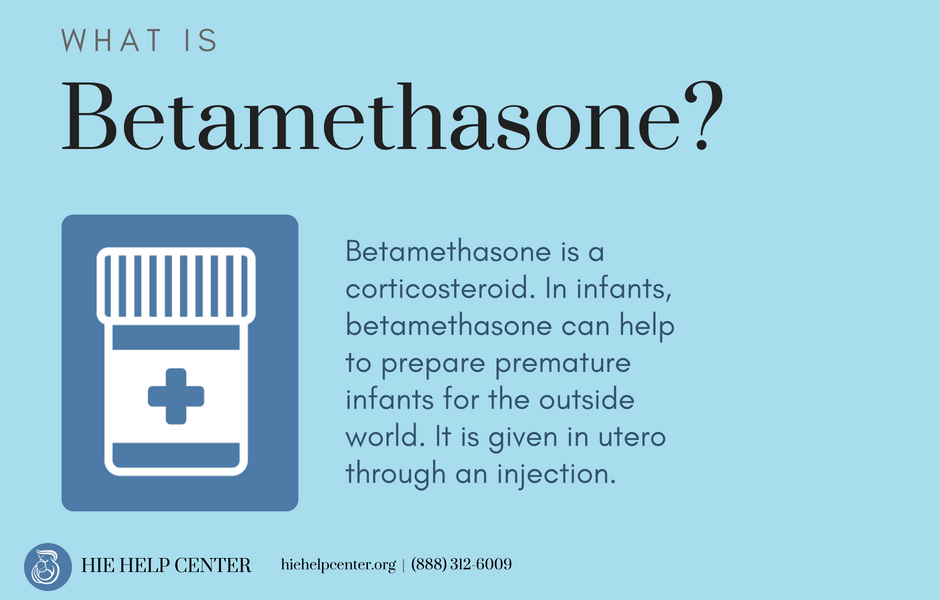 Premature babies are more likely to have health complications because they are underdeveloped and fragile. To prevent hypoxic-ischemic encephalopathy (HIE) and other serious problems, physicians often attempt to prevent preterm birth by giving the mother a cervical cerclage, administering progesterone therapy, or performing other interventions. In most cases, doctors will also take certain measures to minimize the risks associated with prematurity. Two common treatments that may be given to the mother before a premature delivery are magnesium sulfate and betamethasone.
Premature babies are more likely to have health complications because they are underdeveloped and fragile. To prevent hypoxic-ischemic encephalopathy (HIE) and other serious problems, physicians often attempt to prevent preterm birth by giving the mother a cervical cerclage, administering progesterone therapy, or performing other interventions. In most cases, doctors will also take certain measures to minimize the risks associated with prematurity. Two common treatments that may be given to the mother before a premature delivery are magnesium sulfate and betamethasone.
What Is Betamethasone?
 Betamethasone is a corticosteroid that has several medicinal uses. In adults, betamethasone can reduce itching, swelling, and allergic reactions. In infants, betamethasone can help to prepare premature infants for the outside world.
Betamethasone is a corticosteroid that has several medicinal uses. In adults, betamethasone can reduce itching, swelling, and allergic reactions. In infants, betamethasone can help to prepare premature infants for the outside world.
It can be given in utero (this may be referred to as ‘antenatal betamethasone’) through injection into the mother’s arm, legs, or buttocks. It then travels through her bloodstream to reach the baby (1).
How Can Betamethasone Help Premature Infants?
One of the primary benefits of antenatal betamethasone is that it can help speed up lung development in preterm babies. Betamethasone causes the release of surfactant, a substance that lubricates the lungs so that they do not stick together when the infant breathes. Most full-term babies can naturally produce enough surfactant to breathe easily, but this may not be the case for premature infants. Betamethasone can reduce the risk of serious respiratory problems (2, 3). It is important to note that along with betamethasone, premature babies may require artificially-produced surfactant and breathing support from a ventilator (4).
 Moreover, betamethasone has been shown to reduce the risk of intracranial hemorrhages (brain bleeds) and a dangerous type of intestinal infection known as necrotizing enterocolitis (3, 5).
Moreover, betamethasone has been shown to reduce the risk of intracranial hemorrhages (brain bleeds) and a dangerous type of intestinal infection known as necrotizing enterocolitis (3, 5).
In addition to reducing the risk of respiratory problems, intracranial hemorrhages, and necrotizing enterocolitis, betamethasone can decrease a premature infant’s chance of death by as much as 40 percent (1, 6). It can also reduce the likelihood that a baby will develop disabilities such as HIE, cerebral palsy, and periventricular leukomalacia (2, 7).
What Are the Risks Associated with Betamethasone?
Research has found that when given late in pregnancy and in small doses, the side effects of betamethasone are minimal (1, 2, 8). Women at risk of delivering prematurely used to be given multiple courses of steroids, but this was associated with lower birth weights and smaller heads. Today, repeated courses are generally not recommended (1, 8, 9).
When should I consult with an attorney?
If your child was born prematurely and was diagnosed with a subsequent birth injury, this may be a case where medical negligence was involved. HIE Help Center is run by ABC Law Centers, a medical malpractice firm exclusively handling cases involving HIE and related birth injuries since the firm’s inception in 1997. If you suspect your child’s birth injury may have been caused by medical negligence, contact us today to learn more about pursuing a case.
We provide free legal consultations, during which we will inform you of your legal options and answer any questions you have. Moreover, you would pay nothing throughout the entire legal process unless we obtain a favorable settlement.
Sources
- https://www.healthline.com/health/pregnancy/preterm-labor-adjunctive-therapy#corticosteroids
- https://www.medscape.com/viewarticle/533480_9
- https://www.uofmhealth.org/health-library/hw222067
- https://www.healthline.com/health/pregnancy/premature-baby-lung-problems#respiratory-distress-syndrome
- https://www.ncbi.nlm.nih.gov/pubmedhealth/PMH0072752/
- https://www.newscientist.com/article/dn8409-pregnancy-drug-can-affect-grandkids-too/
- https://www.nature.com/articles/pr19991612
- https://www.acog.org/Clinical-Guidance-and-Publications/Committee-Opinions/Committee-on-Obstetric-Practice/Antenatal-Corticosteroid-Therapy-for-Fetal-Maturation
- https://www.ncbi.nlm.nih.gov/pubmed/22525902

